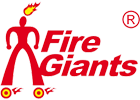Outdoor camping eating is naturally to do it yourself, adequate food and clothing, which requires campers to prepare outdoor camping stoves. When traveling, many people like to bring ingredients to experience the fun of outdoor picnic, and at the same time it can solve the problem of outdoor eating, but it takes a lot of effort to realize such a desire, and you must be prepared before departure All kinds of outdoor cooking utensils, such as stoves, pots, tableware, and other utensils that need to be used for picnics, but people with these supplies are more troublesome for people who have no experience in outdoor picnics.
gas stove
One of the most common stoves on the market
Fuel: Use with gas tanks. The fuel is mainly petroleum gas, which is liquid when carried, and needs to be gasified into gas when used.
advantage:
1. Combustibles are most active in the state of gas, and can be combusted in a controlled and safe manner;
2. Small size to carry and easy to use;
3. There is no excessive requirement for temperature and air flow.
Disadvantages:
1. It is difficult to obtain materials. Low temperature conditions will affect the gasification of liquefied gas, which will affect the stability of combustion adjustment, resulting in delayed response of the adjusted flame.
2. The general standard can basically burn for about 4 hours (a meal and a half of shabu), not suitable for long-term outdoor use;
3. Gas tanks are dangerous goods and are not suitable for carrying in public transportation.
Gasoline stove
Fuel: Gasoline vapor is produced by gasoline pumping and pressurization, which is supplied to the burner for combustion. Theoretically, clean "white gasoline" is used. In actual use, high-grade ordinary gasoline can also be added.
advantage:
1. Firepower and heating power are generally higher than gas tanks;
2. The carrying of empty cans is not restricted by transportation, and fuel can be added after reaching the destination;
3. The fuel life is long, and one can can be used continuously for many days.
Disadvantages:
1. Some gasoline furnaces are larger than gas furnaces;
2. The ignition process is more complicated and more exciting than gas stoves, requiring preheating;
3. The oil pipe of the oil furnace is easy to be blocked and needs to be cleaned regularly.
Wood stove
(Coking gas furnace)
Fuel: Combustible materials such as dead branches, leaves and even cow dung, the most primitive and direct life tool. Many have their own blower, which can be connected to a power supply or a power bank.
advantage:
1. The fuel cost is low and the fuel is extensive. Combustible materials such as dead branches and leaves can be picked up.
2. It is not controlled by fuel and can be carried freely.
Disadvantages:
1. The volume is larger than gas stove and oil burner;
2. It is easy to produce a large amount of carbon ash, and the ash needs to be handled carefully;
3. Unstable combustion and poor windproof effect.





